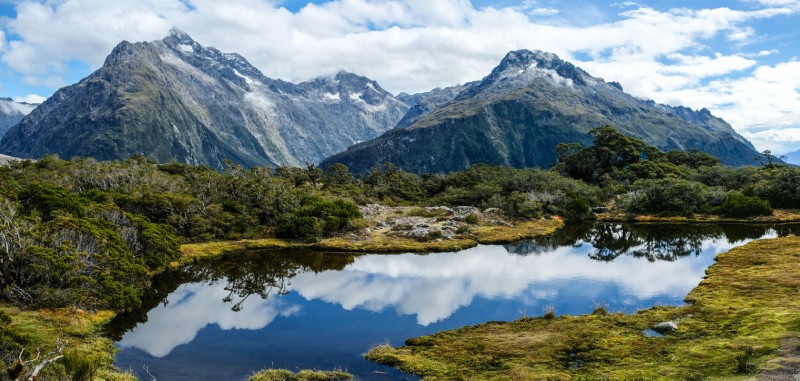
Milford Sound Facts
- The breathtaking Milford Sound represents an absolutely stunning natural fjord. Due to its great beauty, in fact, it holds a special status. That’s because the location ranks as the number one travel destination in the world, according to many sources.
- The mind-blowing beauty of the site has also previously received accolades from other respected sources, and rightfully so. This holds true due to the fact that the highly respected writer Rudyard Kipling himself once positively referred to it.
- He called this astonishing location the eighth wonder of the world. Many people, even today, find themselves in complete agreement with his estimation. The marvels of the location never fail to dazzle and amaze visitors with their awesome beauty.
- The dazzling Milford Sound also boasts amazing features. This fact only serves to add to its appeal. This holds true because, in addition to its own rather remarkable beauty, the site also serves as home to an astonishing variety of wildlife, including right whales.
- The magnificent location also stands out from other geographical wonders for a weather-related fact. This occurs because the area routinely receives copious amounts of rainfall. In fact, it ranks as one of the wettest permanently inhabited regions on earth.
Related Articles
Milford Sound Physical Description
The amazingly gorgeous Milford Sound deserves its fame for its beauty for a wide variety of reasons. For one thing, its walls extend a length of roughly 9.3 mi (15 km). This stunning marvel of Nature also remains bordered by enormous and comparatively sheer rock walls.
In some places along the length of the picturesque fjord, these walls further rise to a height of as much as 3,900 ft (1,200 m). Several equally majestic individual peaks also line its length. Two of these much more massive features exceed 4,200 ft (1,280 m) in height.
In addition to such splendor, the magnificent location also boasts numerous other natural geological wonders for visitors to behold. These extra features even include two magnificent permanent waterfalls, bearing the names of Lady Bowen Falls and Stirling Falls.
After particularly heavy rains, numerous other, though temporary, waterfalls also frequently cascade over the steep rocky slopes. In another marvelous action, water-drenched moss feeds these, with each usually lasting only a few days, once the rain stops.
At its entrance, the marvel of Nature known as Milford Sound additionally connects to the Tasman Sea. This joining occurs at a location known simply as Dale Point. This particular location, itself quite awesome to behold, represents the mouth of the beautiful fjord.
Milford Sound Location, Climate, and Wildlife
Perhaps most notably, the fabulous and world-renowned Milford Sound lies in an area already famous for its splendor. That’s the southwest portion of New Zealand’s South Island, near Australia. More specifically, the formation sits within Fiordland National Park.
The breathtaking natural wonder also forms part of what’s now the Piopiotahi Marine Reserve, and the Te Wahipounamu World Heritage Site. The names of the two protected areas, also quite appropriately, derive from the language of the native Maori.
Understandably, Milford Sound also constitutes the wettest part of the country of New Zealand. This occurs because the region receives an average annual rainfall of about 252 in (6,412 mm). Rainfall totals of as much as 10 in (25 cm) in a single day sometimes occur.
Finally, such a region quite naturally serves as host to numerous species of both flora and fauna. Some of the wide varieties of fauna include several species of seals and bottlenose dolphins. Others, meanwhile, also include several species each of whales and penguins.
Features Sharing Its Region
Check out our other articles on North American Gulches and Canyons, Arapaima Leptosoma, Blyde River Canyon, Hammer Orchid, Indian Giant Squirrel, Southern Tamandua, Hermann’s Tortoise
